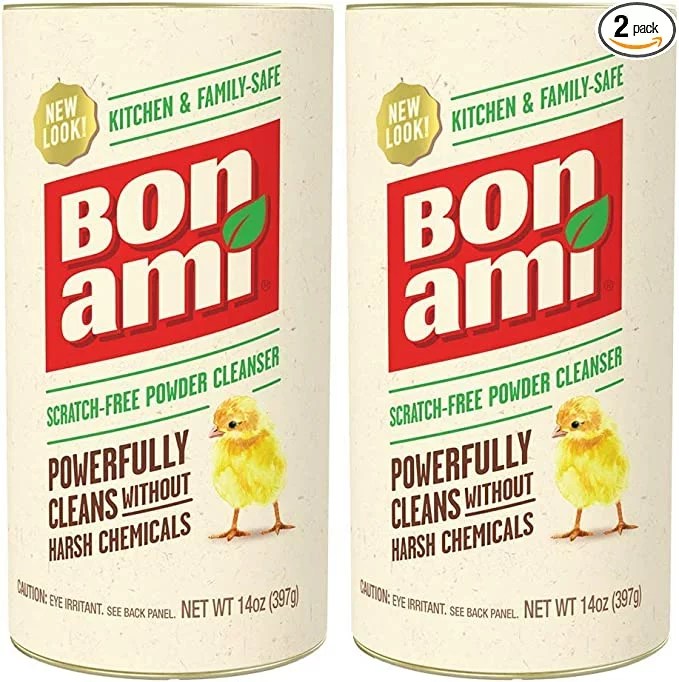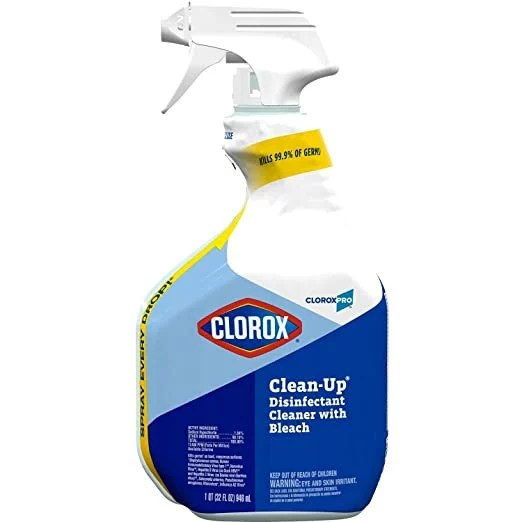“Your toilet seat has probably a few hundred colonies of bacteria on it,” says microbiologist Jason Tetro. “In a kitchen sink, you’re looking at 10,000 for every square centimeter. It could be even as high as a million.” (Yikes.) To get rid of unwanted bacteria, it’ll take more than just dish soap and hot water. Which is why it’s not only important to know how to properly clean your kitchen sink, but how to disinfect it, too.
The expert: Jason Tetro, microbiologist
Jason Tetro is a microbiologist with over 25 years of experience. He is the author of The Germ Files and The Germ Code, and the host of the poscast The Super Awesome Science Show.
Why you should clean and disinfect a kitchen sink
Cleaning a dirty kitchen sink can work wonders to remove stains, food particles, and some microbes, but it doesn’t do much in the way of getting rid of stubborn bacteria. Bacteria can create something called a biofilm which is essentially a slimy coating that makes them resistant to regular cleaning detergents.
Fortunately, biofilm itself is often innocuous, as are the everyday microbes living in the kitchen sink. “They’re just normal environmental bacteria that are part of the water system, or they’re part of the home microbiome,” says Tetro. When left unchecked, however, the biofilm can become a breeding ground of not-so-harmless pathogenic organisms, like campylobacter and certain strains of E.coli, by way of potentially contaminated food.
What’s more, biofilm is sticky, so it holds onto whatever comes into contact with it—and if it traps pathogens, that’s when its presence becomes an issue. Its stickiness also makes it difficult to remove. “You can prevent [biofilm] by regularly cleaning your skin with a detergent, but once they’re there, you can’t get rid of them with detergent. You actually have to use a pretty harsh disinfectant,” Tetro says.
Frequent cleanings can help keep biofilm at bay but without routine disinfection, it can still build up on the surface of your kitchen sink—which is why Tetro stresses the importance of doing both. He recommends cleaning your kitchen sink daily and disinfecting when need be or once a week.
How to clean a kitchen sink
Typically, cleaning a kitchen sink is easy, and you probably have everything you need for the job. Tetro says you don’t have to use anything more than detergent and a sponge.
If you want something with more grit though, Georgia Dixon, a former guide at Grove Collaborative, previously recommended an abrasive cleaner. “One of our favorites is the versatile and timeless Bon Ami Cleanser ($10),” she told Well+Good. You can use this or detergent to lightly scrub the kitchen sink, faucet, and taps.

Bon Ami, Powder Cleanser, 2-Pack — $10.00
This pair of Bon Ami powder cleansers comes with the recommendation of Georgia Dixon, a grove guide at Grove Collaborative—and a 4.7-star overall rating on Amazon after more than 4,500 reviewers chimed in. It uses only five ingredients, including limestone, feldspar, soda ash, baking soda, and biodegradable detergent, and it’s safe for a variety of surfaces, such as porcelain and stainless steel. It is mildly abrasive to whisk away stains and smudges, but not so much that it’ll scratch your sink.
As always, you’ll want to follow the manufacturer’s instructions for any new cleaning product and test it on an inconspicuous area of your sink to make sure it doesn’t cause any damage.
Keep in mind that a clean kitchen sink goes beyond the basin. You want to give the same level of care to the kitchen sink drain, too. “Dirty drains can be a breeding ground for pests like fruit flies,” says Dixon. “You can use a baking soda and vinegar solution or a disposal-specific product to keep drains clear,” she says.
How to disinfect a kitchen sink
It’s a good idea to disinfect your kitchen sink regularly, especially if you’re handling raw meat.
According to Tetro, you can destroy most pathogens using disinfectants with bleach (sometimes labeled sodium hypochlorite), though you’ll want to steer clear of it if you have a stainless steel kitchen sink as it is highly corrosive. As an alternative, you can use hydrogen peroxide. “Bleach and hydrogen peroxide can kill numerous different types of bacteria and viruses very effectively,” he says.
Another viable option are disinfectants containing citric acid, an ingredient that packs a powerful punch. “They’re acids that have a component attached to them that is antimicrobial and that will help kill the bacteria,” says Tetro. Regardless of which detergent you use, you’ll always want to ensure that it has a degreasing agent, which will be explicitly stated on the label. This, he says, will help lift biofilm on the surface of a kitchen sink.

Clorox, Disinfectant Cleaner With Bleach Spray, 32 Fl. Oz. — $4.00
With bleach as its primary ingredient, Clorox’s disinfectant cleaner spray can kill up to 99.9 percent of bacteria and germs in 30 seconds flat. Its formula also works to cut through grease and grime, as well as eliminate any lingering odors. As a plus, it received a 4.8-star overall rating on Amazon after more than 2,700 reviews.
It’s also worth thinking about the material of your kitchen sink. Read the product label to ensure that the disinfectant is safe to use on the surface of your sink. To play it on the safe side, you may also want to test it on a small area of your sink before full application.
For a disinfectant to work its magic, you’ll typically want to leave it on for a specific amount of time before wiping it off, which can range up to 30 minutes—the product label should indicate this. Tetro says that this is the most important factor when using a disinfectant. Unfortunately, “sometimes people don’t do that,” he says. “There have been studies that basically look at how people [disinfect] and many leave it on for just 10 seconds.”
Another thing to keep in mind is that you’ll always want to clean a dirty sink (or any surface, for that matter) before disinfecting it. “If it’s visibly dirty, you should clean with soap and water first, make sure it’s dry, and then using the disinfecting agent,” Karen Hoffman, RN, immediate past president of the Association for Professionals in Infection Control and Epidemiology (APIC), told Well+Good.
After you clean the kitchen sink, “you take your disinfectant, you spray it in there, you leave it for three or five minutes, or whatever the label tells you to do, and then you rinse it,” says Tetro. Ideally, you want to disinfect your kitchen sink once every week. However, he adds, you’ll want to disinfect your sink immediately after handling raw meat, particularly chicken.
The bottom line is: Cleaning your kitchen sink isn’t always enough, you’ll also want to ensure that you’re regularly disinfecting it. Considering how much unwanted bacteria a dirty kitchen sink can accumulate, it’s well worth the extra step.
Our editors independently select these products. Making a purchase through our links may earn Well+Good a commission.
